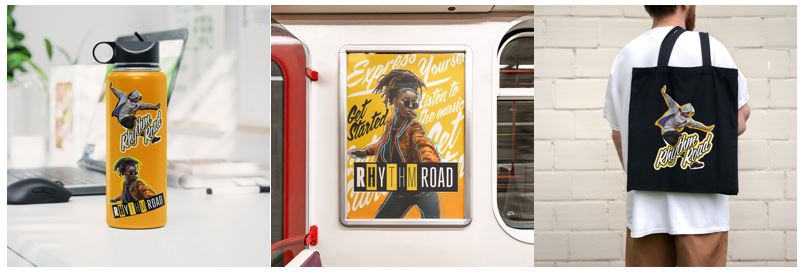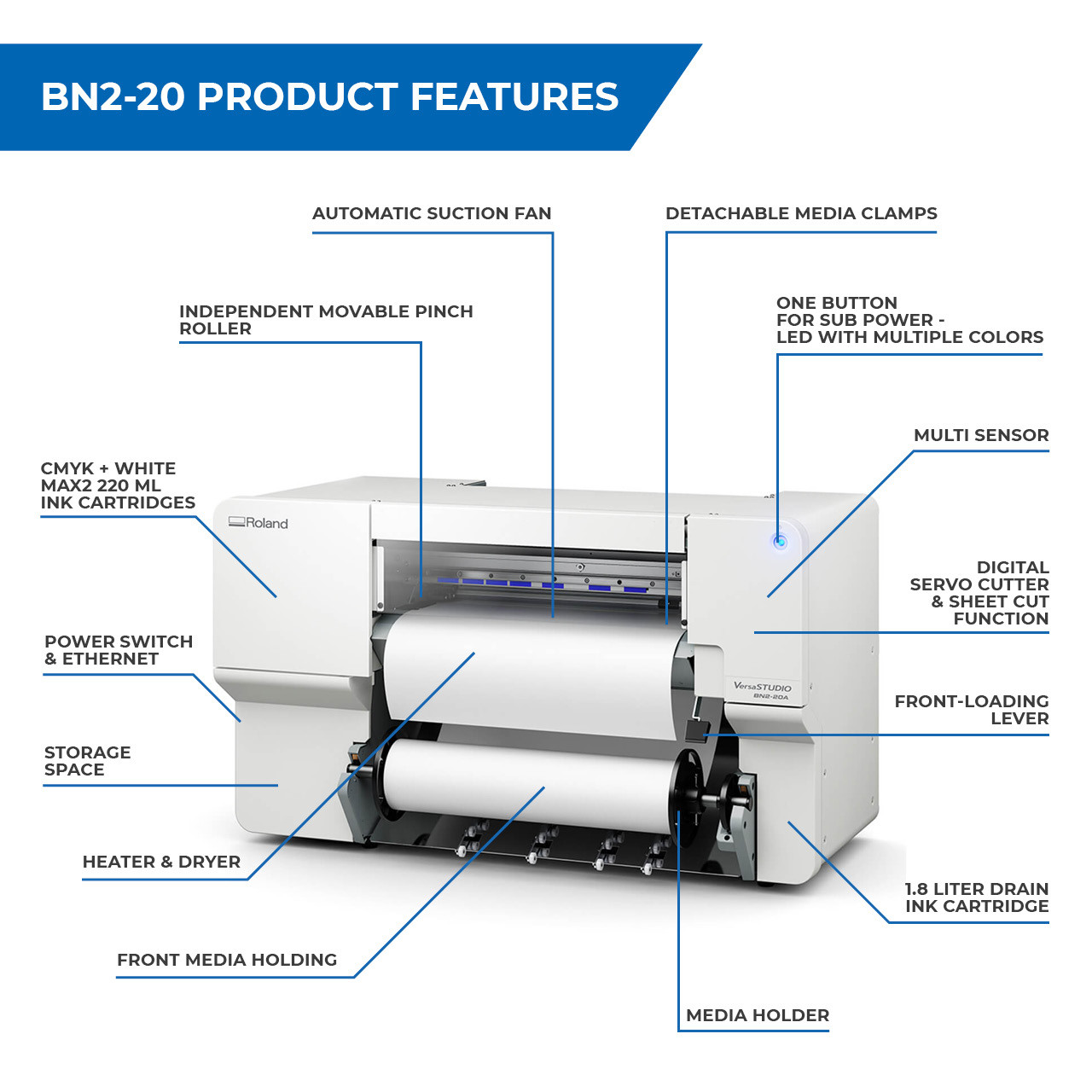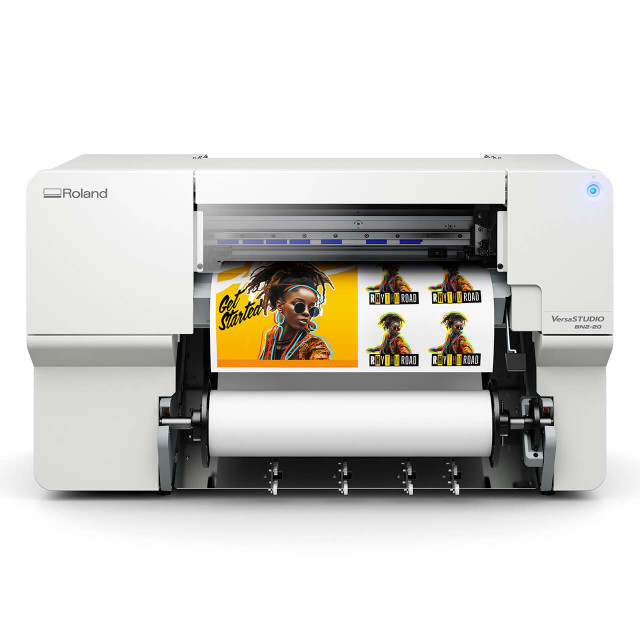What is the difference between the Roland BN2-20 and the BN-20?
Sep 13th 2023
Are you in the market for a high-quality print and cut solution that can meet your business or creative needs? Roland, a well-known name in the world of digital printing, has just unveiled the next generation of their popular BN-20 line. This solution will print and cut graphics on a variety of media for a wide range of applications.

The new 20" Print and cut system, known as the BN2-20 (or BN-20A for its 4-color variant), brings several improvements and enhancements over its predecessor, the BN-20. In this article, we'll delve into these differences and help you understand why the BN2-20 might be the right choice for you.
Speed and Efficiency
One of the standout features of the BN2-20 is its impressive speed. It prints a stunning 4-5 times faster than the BN-20. This leap in speed can make a significant difference in your workflow, whether you're a small business owner, a graphic designer, or anyone who relies on high-quality prints.
Imagine the time you'll save when you can produce more prints in less time. Faster printing not only increases your productivity but also allows you to meet tight deadlines without breaking a sweat. Whether you're running a print shop or handling various printing projects, the BN2-20's speed is a game-changer.
Media Loading
The BN2-20 introduces frontloaded media handling, which makes loading media faster and more convenient. With the BN-20, you had to access the rear of the printer to load media, which could be a bit cumbersome, especially in tight spaces. However, the BN2-20 simplifies this process by allowing you to load media from the front.
This improvement not only saves you time but also reduces the hassle of maneuvering the printer. Whether you're working in a small office or a busy production environment, the frontloaded media feature of the BN2-20 is a practical upgrade.
Sheet Cutting
Do you value clean-cut edges on your prints? The BN2-20 comes equipped with a sheet cutting function that automatically trims the media when a job is completed. This ensures that each print has a professional, finished look.
No more manually cutting prints or dealing with uneven edges. The sheet cutting feature not only enhances the aesthetics of your prints but also streamlines your post-printing process. It's a small but significant improvement that adds to the overall convenience of using the BN2-20.
Utility App and Custom Profiles
The BN2-20 offers an updated utility app with custom media profiles. This feature allows you to create custom color settings for specific types of media. Why is this important? Different media types may require specific color adjustments to ensure optimal print quality.
With custom media profiles, you can easily adjust color settings to match the characteristics of each media type. This ensures that your prints consistently meet your desired quality standards, regardless of the material you're using.
Environmental Considerations
In an era where environmental sustainability is a growing concern, Roland has made a thoughtful addition to the BN2-20. This printer includes a reusable waste ink tank, designed to reduce waste and minimize the use of single-use plastics.
By opting for a printer with a reusable waste ink tank, you're not only contributing to a greener planet but also reducing operational costs associated with waste disposal. It's a step in the right direction for businesses and individuals looking to make environmentally conscious choices.

Conclusion
In conclusion, the Roland BN2-20 brings several key improvements over its predecessor, the BN-20. From its impressive speed and frontloaded media handling to the sheet cutting feature, custom media profiles, and environmental considerations, the BN2-20 is a well-rounded choice for those in need of high-quality printing solutions.
If you're looking to enhance your productivity, streamline your workflow, and reduce waste, the BN2-20 should definitely be on your radar. To get a visual comparison and a more detailed look at these differences, we highly recommend watching the introductory video here.
